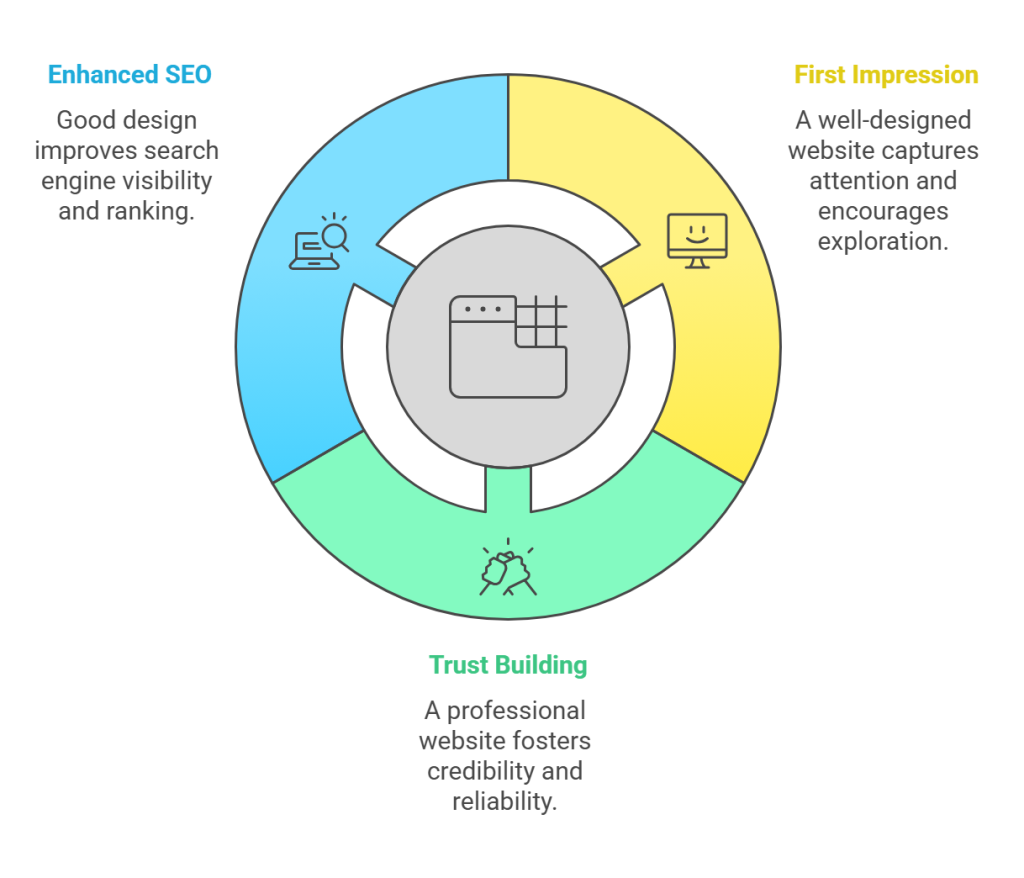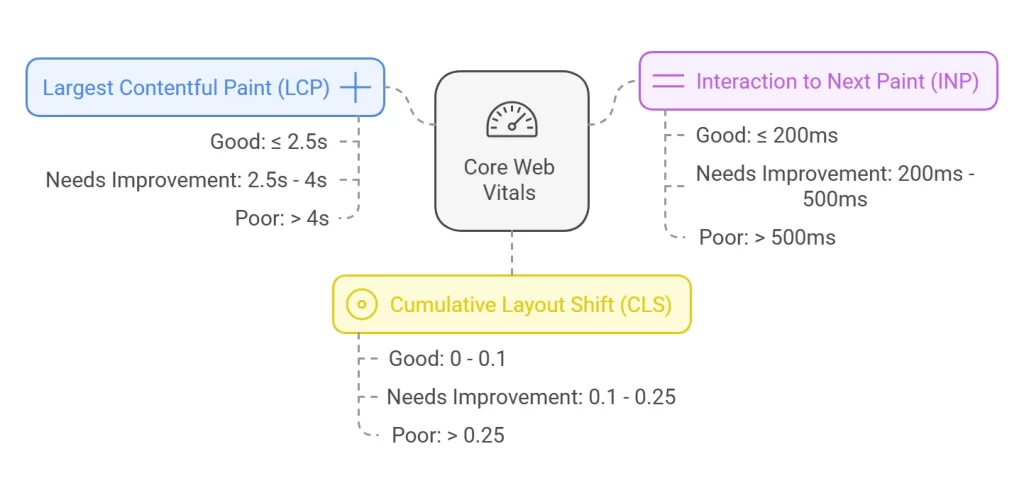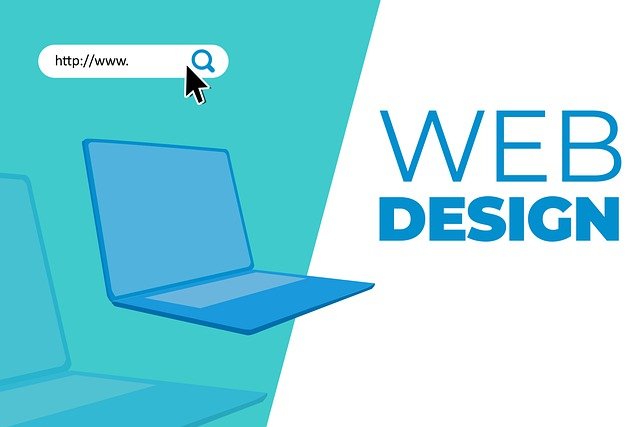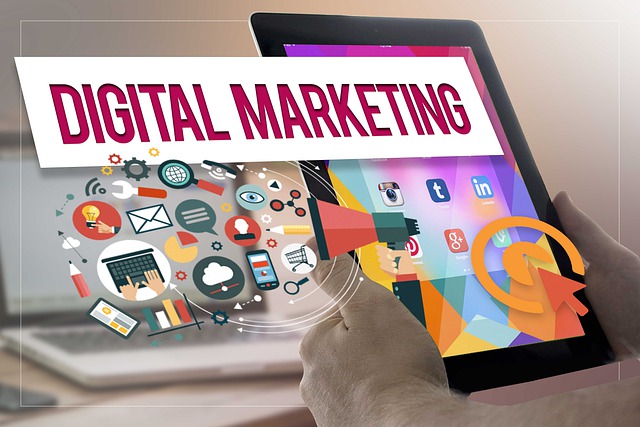As a business, you can’t exist without a website, today.
It helps you showcase your products and services in the best way possible.
So, it should be designed well.
In fact, every digital marketing strategy revolves around a website.
A good web design and digital marketing strategy can together turn even a casual visitor into a paying customer.
What is Web Design in Digital Marketing?
There is no denying that digital marketing and web design are connected.
By definition, digital marketing is the practice of carrying out marketing activities through an online medium or electronic device.
In digital marketing, you need a website to drive traffic to, either organically or through paid ads, and for people to take action, such as purchasing a product or making a reservation.
And you cannot expect your audience to take the desired action if your website is poorly designed.
Poor design is always cited as the primary reason why visitors abandon a website.
It leads to slow loading, and bad navigation, resulting in high bounce rates.
On the contrary, by adhering to the most recent web design and development trends, you can increase your chances of achieving your marketing goals faster.
Why is Website Design so Important in Digital Marketing?

Marketers have a plethora of internet marketing techniques at their disposal, such as Search Engine Optimization (SEO), Pay-Per-Click, Content Marketing, and Social Media Marketing, to achieve their objectives.
None of these, however, will be effective without a well-designed website.
Website design is regarded as the cornerstone of digital marketing for the following reasons:
1. It can help make a good first impression
The quality of your website is the first thing that people notice about your brand, and if they aren’t impressed, they will likely go to your competitor’s site instead.
A well-designed website can leave a positive first impression on their minds, keep them interested in your brand, and make them want to buy your products right away.
2. It helps build trust with your audience
If you have a poor-quality website, people might think your brand isn’t reliable or trustworthy.
While a well-designed website with regular page updates will keep your visitors interested and make them want to spend more time on your website.
This also makes your brand seem more trustworthy and can help bring in more customers.
3. It makes SEO work better
SEO is all about making your website more visible on search engines.
A good web design makes it easier for search engines to find and rank your website.
It also ensures that your site is responsive, easy to navigate, and crawl-friendly, which ultimately leads to more visitors spending more time on it.
Things to Keep in Mind about Web design for Effective Digital Marketing Campaign
Web design influences digital marketing strategies.
Therefore, web design is no longer treated as a standalone service by digital marketing agencies.
Here are some considerations to keep in mind while designing your website for the best results.
1. Friendly User Experience
Your website should be simple and easy to use.
People don’t use a website if it has a bad user interface. A user-friendly interface can be achieved by:
Simplifying navigation: This means that visitors should be able to navigate your website and reach the desired pages with minimal effort and time.
Sticking to standard design practices: People are used to standard design layouts, so a complex layout can sometimes backfire on your marketing goals. Therefore, it makes sense to stick to the usual ways of designing.
Optimizing for mobile users: 92% of all online activities happen on mobile devices. Meaning you won’t be able to reach most of your online audience unless your website is mobile-friendly.
Establishing credibility through better content: Users won’t trust you if you don’t come across as credible, so it’s important to work on improving your content to earn the trust of your audience.
2. Search Engine Optimization (SEO)
When designing your website, you must strike a balance between user-friendliness and search engine-friendliness.
By integrating SEO into your website design process your website is more optimized for search engines.
Meaning it will show up in searches happening for your products and services.
SEO web design helps you:
get a higher ranking on search engines.
get high organic traffic
get the most out of your marketing spending
Your SEO agency can assist you in developing an SEO-friendly web design for your website.
3. Conversion Rate Optimization (CRO)
It’s not worth having a website if it doesn’t get people to do what you want them to do.
In digital marketing parlance, it is called conversions.
A conversion can be anything from signing up for a newsletter to clicking on a link to filling out a form to actually making a purchase.
In fact, The effectiveness of a website design is measured by its conversion rates.
To ensure a high conversion rate, you will have to consider the following factors:
Clear communication
Your copy should be understandable and strategically placed so that visitors do not overlook it.
Similarly, “pop-up” messages should be delivered to the appropriate person at the appropriate time.
With the help of internet marketing tools, you can find out a lot about your visitors, today.
For example, details like… is it their first visit to your website?
What device are they using? Where did they come from?
how many pages have they looked at, and so on?
Using this information, you can customize and shoot your message.
This is how you do it.
A visitor arrives at your website after clicking on one of your Instagram advertisements for a yellow umbrella.
And he leaves without purchasing anything.
A few days later, he accidentally visits your website again.
Since you know he was looking for a yellow umbrella, you can display a pop-up message saying “Looking for a yellow umbrella?
Get 10% off now.” This will convince him to purchase your yellow umbrella.
Easy navigation
People will go to another website if your website is difficult to navigate.
One of the primary reasons for high bounce rates is poor navigation.
Poor navigation causes 61.5% of visitors to abandon a website.
Your visitors must be able to easily move around your website, toggle between pages, and click specific options.
If your website is hard to use, they will stop using it.
Accessibility
Although accessibility does not directly affect page rankings, it can have a significant negative impact if your website lacks it.
Visitors will leave your website and will not recommend it to their peers if they don’t find it useful.
You can improve your website’s accessibility by including compelling meta titles and descriptions, audio and video transcripts, image alt texts, and so on.
Currently, Google doesn’t give much emphasis on accessibility while ranking web pages, but there’s a possibility that accessibility may become a significant determinant factor of SERPs in the future.
Call to action (CTA)
CTAs can have a significant impact on your conversion rate.
Simply put, it’s a message that must accompany the story you’re telling your readers in order to persuade them to take the necessary action.
When writing a CTA, use specific terms that will persuade the reader to take action.
Words and phrases such as “free,” “offer expires soon,” and “download now” can boost conversion by 5%.
Using words like “get”, “request”, “schedule” etc. can have a greater impact because they tell the reader what they’ll get rather than what they must do.
Action words such as “start”, “join”, and “discover” also make a compelling CTA.
So, choose one that best meets your needs.
The right placement of your CTA is just as important as the CTA itself.
It would be best if you place it “above the fold”.
You can also keep your CTA floating on the page to make it more noticeable.
4. Site Speed
A well-designed website loads within three to four seconds.
If the site takes more time to load, it reflects a poor user experience.
Factors like the number of images and videos on the website, themes and web plugins installed on the site and the codes of your website can affect the speed of your site.
The site speed of your website can be improved by:
Eliminating unnecessary plugins
Minifying HTML, JavaScript and CSS
Enabling browser caching
Caching your webpages
Reducing your redirects
Compressing your images
Choosing an excellent performance-optimized hosting solution
5. Core Web Vitals

Core web vitals are an essential component of digital marketing and web development.
They are certain factors used by Google to measure a page’s usability in a real-world scenario.
Core web vitals primarily consist of three web page measurement metrics, they are:
Largest contentful paint (LCP)
It’s a metric that measures the amount of time taken for the page to load since the viewer clicked on the link.
You can use Google page speed insights to check your website’s LCP score.
According to Google’s LCP guidelines, an LCP score of more than 4 seconds is considered “poor”, an LCP score between 2.5 and 4.0 seconds is categorized as “needs improvement”, and an LCP score of 2.5 seconds and less is considered to be “good”.
You can improve your website’s LCP score by removing unnecessary third-party scripts, upgrading your web host, removing large page elements and minifying your CSS.
Interaction to next paint (INP)
INP (Interaction to Next Paint) is a web performance metric developed by Google to evaluate the responsiveness of a web page during user interactions.
It measures the time it takes for a page to respond to a user’s interaction, such as clicking a button, submitting a form, or navigating through the page, and then display the next visible update.
A good INP rating is less than or equal to 200 milliseconds, indicating a highly responsive and seamless experience for users.
If the INP is less than or equal to 500 milliseconds, it requires improvement, as the responsiveness may impact user satisfaction.
An INP greater than 500 milliseconds is considered poor and suggests significant delays in interaction, leading to a subpar user experience.
For developers and designers, optimizing INP involves reducing input delays and improving front-end performance, which contributes to higher engagement, satisfaction, and conversion rates.
This metric is crucial for enhancing website usability and overall performance.
Cumulative layout shift (CLS)
Cumulative layout shift measures the visual stability of the site.
Your page is considered to have a high CLS if the elements on your page move around.
This isn’t good for your website.
You can minimize CLS by adding new user interface elements below the fold and ensuring that ad elements have a reserved space.
Again there is a criterion for determining the best CLS range.
A CLS score between 0 and 0.1 is considered “good”, 0.1 and 0.25 is considered as “needs improvement,” and above 0.25 is considered “poor.”
6. Responsiveness
The responsiveness of a website is determined by its ability to function properly on screens of various sizes.
It is concerned with how well the website works on devices such as PCs, tablets, smartphones, etc.
It’s goal is to provide a flexible display of your website, irrespective of the device used.
Responsiveness is a vital aspect of digital marketing and web development.
It reduces cost by eliminating the need to create a new website.
It improves user experience.
It helps in SEO
It helps to make quick and easy changes to your website.
7. High-Quality Visuals
For any digital marketing campaign, high-quality images and visuals are crucial in website design.
They grab the eye, deliver information in a snap, and help users relate to the website, making it more memorable.
High-quality images, videos, and graphics enhance brand recognition and increase the website’s credibility, which in turn makes visitors stay and explore more.
Attractive and appealing designs also help to minimize bounce rates and enhance user engagement, which in turn enhances search engine ranking.
Good graphics eliminate confusion, help people grasp complicated information, and may lead to increased conversions and sales.
In a nutshell, visuals play an important role in making a digital marketing campaign effective and visually appealing, ultimately contributing to the overall effectiveness of a given website
8. Content Readability
Content readability is the ease at which a visitor can understand the text on your website.
It is an essential component of content marketing.
Readability helps to make the content more exciting and engaging.
This, in turn, helps to improve your website’s rankings on SERPs.
Readability depends on different factors like the length of the sentences, the fonts used, the breaks between paragraphs, the color schemes used, the use of passive voice, and the choice of words.
9. Branding
People tend to judge your brand by how your website looks because your website is your brand identity.
Therefore, it’s essential to make sure your website’s design is consistent with your brand.
Web design is an important component of online branding.
If your website is well-designed you can earn some brownie points.
Also, customers often visit and spend a lot of time on your website.
So, make sure all the information you have on your website is legit and reliable.
False or lack of information can make your company appear untrustworthy.
Editors can make use of review and approval tools to ensure that all content is consistently aligned with your branding strategy.
10. Competition
Another factor to consider when designing your website is your competition; how your competitors have designed their websites, what new features they are bringing, how frequently they are updating their websites, etc.
If you are able to outperform them, you win.
But don’t try to copy their design. It’s good to keep it unique.
Get help from professional web designing companies to create a website that will help you stand out from your competitors.
11. Analytics and monitoring
This is mostly relevant to website redesign.
Google Analytics monitors and reports on the performance of your website and identifies areas for improvement.
If you pay attention to these metrics, you can better tailor your website’s design and content to your audience’s needs.
Search engines like Google, frequently update their algorithms, so by paying attention to them, you can make your website visible on SERPs.
Reviewing the performance of your website on a regular basis can help your business thrive in an ever-changing environment.
Web design can have a significant impact on your digital marketing strategies.
Therefore, it is advantageous to include all the components of a good design when designing a website because only then will it support your digital marketing activities.
Web Design and Digital Marketing with Global Media Insight
In the current world of web design and digital marketing, working with a renowned and experienced agency becomes critical for success.
At Global Media Insight, we pride ourselves on offering exceptional web design services and well-rounded digital marketing solutions that drive measurable results.
At our company, we have a 130+ expert team who work hard to understand your business needs and come up with solutions that will help you stand out online, engage your audience and make sales.
If you require an aesthetically appealing and fast-loading website, search engine optimization, or a comprehensive digital marketing strategy to take your business to the next level, then Global Media Insight is your ideal partner.
With a strong focus on creativity, performance, and usability, we guarantee that your digital products not only look great but also work seamlessly across all channels.
Join our list of delighted clients and discover how a proper digital strategy can make a difference.
With over 24 years of experience, Global Media Insight can assist you in harnessing the power of the digital world through web design and digital marketing services.
Contact us today and find out how we can enhance your brand and expand your company’s reach.

GMI’s Research Team is a panel of knowledgeable experts from various fields such as digital marketing, social media, and web development, all united by a common goal—to educate. We enjoy exploring everything from the latest industry trends and emerging technologies to people and demographics, both in the UAE and beyond. Through our blog posts, we share valuable insights that help businesses and marketers stay informed and prepared for the challenges and opportunities that lie ahead.











